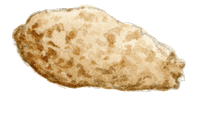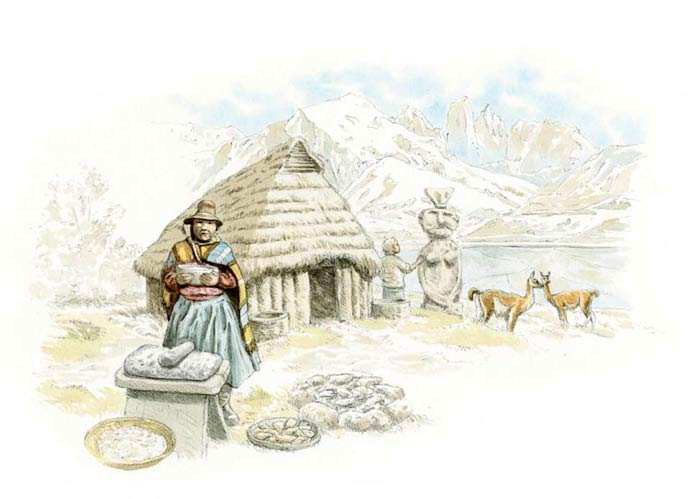Catuto or “stone bread”

Form: Pancake or flat bread
Country of origin: Chili, Araucanía region
What distinguishes it from other methods of bread making: Wheat grain is cracked using mortars.
Category of bread: (2) In the world of Amerindian flat cakes, the Mapuches’ cracked wheat bread, referred to as “catuto”, is very close to the Mexican tortilla and the Columbian arepa, both made with corn, as well to the more ancient cassava or manioc.
Particularity: This bread is made by the indigenous Mapuches, a population representing about 600,000 people in Chili and Argentina.
Ingredients: Fine cracked wheat (similar to bulgur); salt, and water

Chili, Araucanía region
The Mapuches live in the region of Araucanía in Chili, and in the past, had the reputation of being ferocious warriors. They stood up not only to the Incas, but also even to the Spanish who landed in their territory. If they approved the Frenchmen Antoine de Tounens’ plans to found the Kingdom of Araucanía in the 19th century, it was because it seemed to protect them from the Chileans’ hegemonic claims.
In the end, the Kingdom of Araucanía was reconquered and the Mapuches were put on reservations, but the legacy of their rich culture lingers in Chile. The “stone bread” or catuto lives on as an ambassador for the Mapuches, one of the most inconspicuous and popular peoples in all of Chili.
Catuto is a wheat cake similar to arepa, which is found more to the north, or cassava, but it is made from cracked wheat, still prepared the same ways as it has been since time immemorial. The women in fact crush the grain with a mortar until they obtain a coarse flour, which they use to make the bread. They then shape the flat cakes and cook them in a pot over the fire or fry them. They are eaten with fish or cochayuyo, a dried seaweed specific to Chile, which is eaten as a salad or used to make soup.

